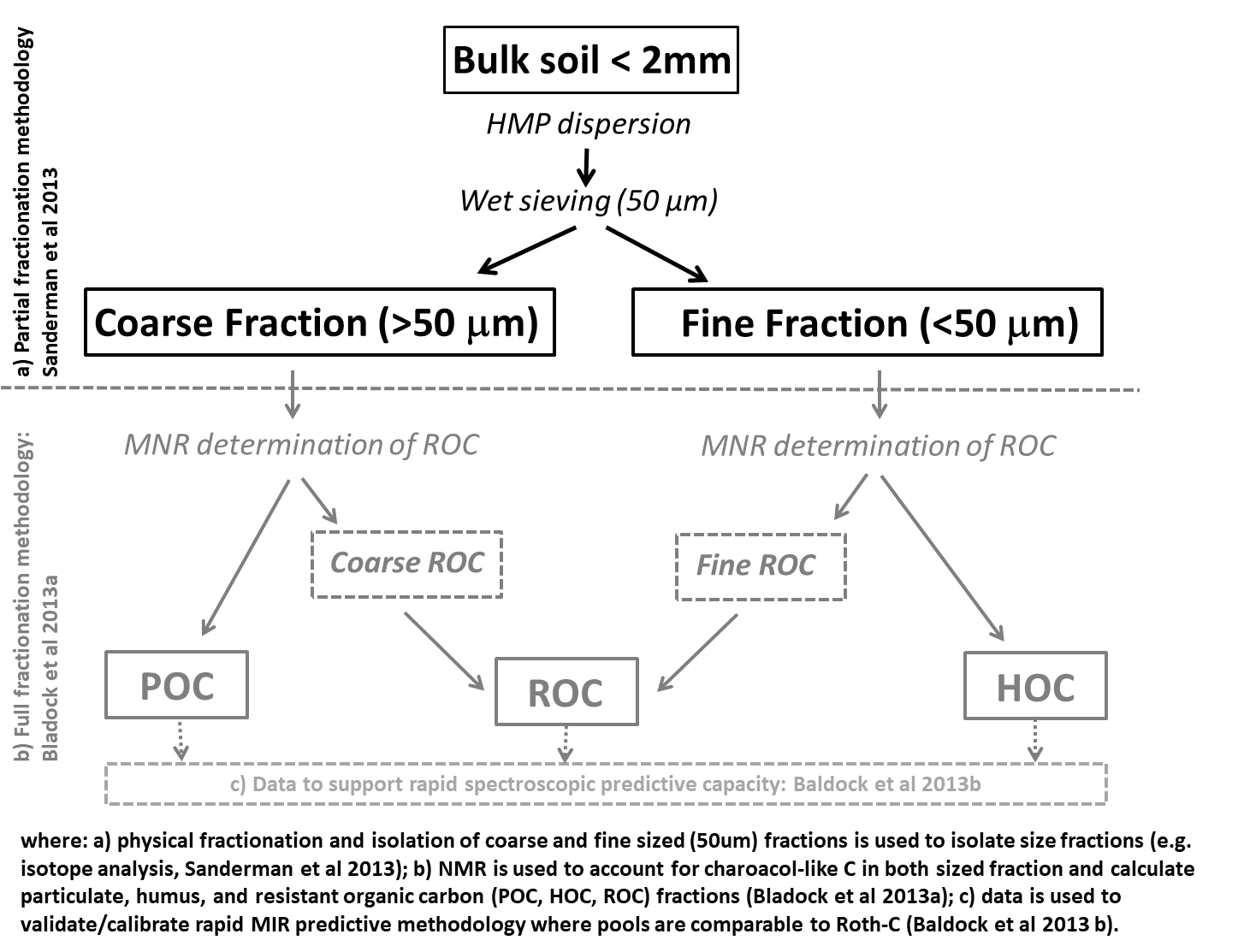Particles Sanderman
Description and working steps
Semi-automated vibratory sieve fractionation (Analysette 3 PRO; FRITSCH GmbH, Idar-Oberstein, Germany) into coarse (>50mm) and fine (<50 mm) material following dispersion in HMP. Following a 3 minute wet fractionation process recovered material is subsequently freeze dried prior to any further analysis.
Modifications to published version: As described in Sanderman et al (2013), a size fractionation (2 pool) method representing a simplification of the 3-pool method of Baldock et al (2013a); omits the spectroscopic determination of the resistant pool, providing two fractions representing coarse and fine sized fractions for isotopic determination.
Recommended study objectives/soil types:
- Sanderman et al 2013, where: isolation of SOC into C3-C4 transition exists and where ROC fraction is unlikely to vary between comparison soils;
- Baldock et al 2013a: where study objectives relate to understanding and/or modelling impacts of management or land-use on carbon pool composition and C modelling via3 pool methods (e.g. Roth-C);
- Baldock et al 2013b; where sample numbers are large, such as national scale inventory/monitoring activities which can be supported by rapid assessment based on MIR calibration dataset.
Initial Aim
The scheme represents a two pool simplification of methodology originally developed to support Australia’s soil carbon accounting (Skjemstad et al 2004), previously modified to account for ROC within both coarse and fine size fraction (Baldock et al 2014). The Sanderman methodology simplified the methodology to two pools (coarse and fine) to allow isotope determination, owing to limitations relating to spectroscopic determination of ROC (NMR) within size fractions rather than physical isolation/separation of this fraction. Limitations of the Sanderman simplification may arise where the isotope composition of ROC is expected to differ between samples, or where the distribution of ROC between coarse and fine sized fractions may differ.
Advantages
- Semi-automated wet-sieving method significantly reduces inter-operator variability, maximizes recovery, and minimizes workload (3 min fractionation process) as detailed in Baldock et al (2013a).
Disadvantages
- Only two pools are physically isolated, limiting the opportunity to account for differences that may arise within the resistant organic carbon pool.
References
Sanderman, J., Fillery, I., Jongepier, R., Massalsky, A., Roper, M., Macdonald, L., Maddern, T., Murphy, D., Baldock, J., 2013. Carbon sequestration under subtropical perennial pastures II: Carbon dynamics. Soil Research 51, 771-780.
Baldock, J.A., Sanderman, J., Macdonald, L.M., Puccini, A., Hawke, B., Szarvas, S., McGowan, J., 2013a. Quantifying the allocation of soil organic carbon to biologically significant fractions. Soil Research 51, 561-576.
Baldock, J., Hawke, B., Sanderman, J., Macdonald, L., 2013b. Predicting contents of carbon and its component fractions in Australian soils from diffuse reflectance mid-infrared spectra. Soil Research 51, 577-595.
